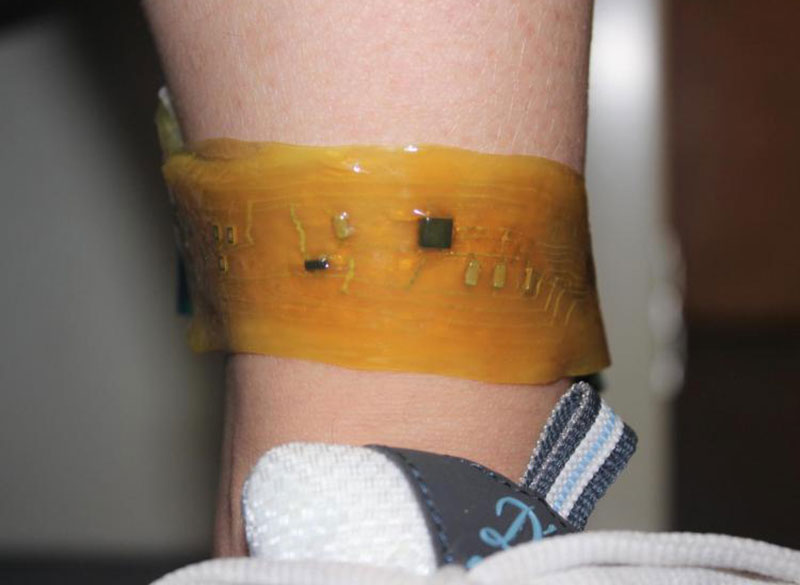Researchers at the University of Colorado Boulder have developed a circuit board that provides true flexibility and can be easily recycled. Described as “really wearable”, the device is inspired by, and sticks onto, human skin, the authors said.
Read more Stretchable Sensor Provides Skin-Like Sensation to Robots, AR/VR
The team, led by Jianliang Xiao and Wei Zhang, reports its new electronic skin in a paper published in the journal Science Advances. The device can heal itself, much like real skin. It also reliably performs a range of sensory tasks, from measuring the body temperature of users to tracking their daily step counts.
The device is also reconfigurable, meaning that the device can be shaped to fit anywhere on the body, reports Daniel Strain in CU Boulder Today.
“If you want to wear this like a watch, you can put it around your wrist,” said Xiao, an associate professor in the Paul M. Rady Department of Mechanical Engineering at CU Boulder. “If you want to wear this like a necklace, you can put it on your neck.”
The researchers said that one day, such high-tech skin could allow people to collect accurate data about their bodies—all while cutting down on the world’s surging quantities of electronic waste.
“Smartwatches are functionally nice, but they’re always a big chunk of metal on a band,” said Zhang, a professor in the Department of Chemistry. “If we want a truly wearable device, ideally it will be a thin film that can comfortably fit onto your body.”
The researchers previously described their design for electronic skin in 2018. But their latest version of the technology makes a lot of improvements on the concept—for a start, it’s far more elastic, not to mention functional.

To manufacture their bouncy product, Xiao and his colleagues use screen printing to create a network of liquid metal wires. They then sandwich those circuits in between two thin films made out of a highly flexible and self-healing material called polyimine, the CU Boulder report said.
The resulting device is a little thicker than a Band-Aid and can be applied to skin with heat. It can also stretch by 60% in any direction without disrupting the electronics inside, the team reports.
“It’s really stretchy, which enables a lot of possibilities that weren’t an option before,” Xiao said.
Read more Artificial Skin Could Enhance Sense of Touch and Provide Real-Time Haptic Feedback
Another advantage of this electronic skin is reusability. If thrown into a recycling solution, the polyimine will depolymerize, or separate into its component molecules, while the electronic components sink to the bottom. Both the electronics and the stretchy material can then be reused.
“Our solution to electronic waste is to start with how we make the device, not from the endpoint, or when it’s already been thrown away,” Xiao said. “We want a device that is easy to recycle.”












